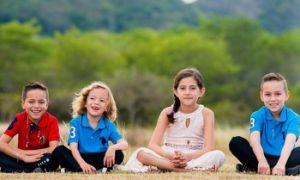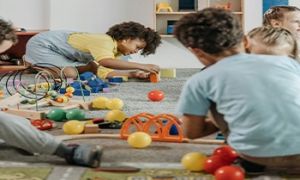Teaching preschoolers about space can be a fun and engaging way to spark their curiosity and imagination! The following provides a variety of experiences for children can engage in.
1. Space-Themed Books
Reading books about space is a great way to introduce young children to the topic. Some popular choices include:
- “There’s No Place Like Space” by Tish Rabe
- “Papa, Please Get the Moon for Me” by Eric Carle
- “The Darkest Dark” by Chris Hadfield
2. Hands-On Activities
- Galaxy Dough: Create your own galaxy dough using glitter and dark colors to mimic the night sky.
- Telescope Decorating: Use paper towel tubes to create and decorate telescopes, discussing how scientists use them to observe stars and planets1.
- Space Sensory Bin: Fill a bin with small dark rocks, glow-in-the-dark stars, and other space objects.
3. Art Projects
- Marbled Planets: Use marbles, paint, and shaving cream to create planet art.
- Planet Suncatchers: Decorate circular wax paper pieces as planets to hang in your windows.
- Rocket Names: Create a craft where children spell out their names on a rocket ship.
4. Songs and Music
- Incorporate space-themed songs into your circle time. Songs like “Twinkle, Twinkle, Little Star” and “Zoom, Zoom, Zoom, We’re Going to the Moon” can be both fun and educational.
- 5 Little Stars
- We're Flying To The Moon
- Five Little Astronauts
- Climb Aboard The Spaceship
5. Simple Science Concepts
- Night and Day: Explain the concept of night and day using a flashlight and a globe.
- Phases of the Moon: Use Oreo cookies to demonstrate the different phases of the moon.
6. Dramatic Play
- Set up a space station in your classroom with astronaut costumes, control panels, and space-themed props. This can encourage imaginative play and help children learn through role-playing.
7. Space-Themed Snacks
- Rocket Fruit Kabobs: Use skewers to create fruit rockets with grapes, strawberries, and melon slices.
- Moon Cheese: Serve cheese balls as “moon rocks” for a fun snack.
8. Space Story Time
- Storytelling with Puppets: Use space-themed puppets to tell stories about astronauts and space adventures.
- Interactive Storybooks: Choose books that allow children to participate by pressing buttons or lifting flaps.
9. Space Exploration Videos
- Short Educational Videos: Show age-appropriate videos about space, such as clips from NASA’s website or educational YouTube channels.
- Virtual Planetarium: Use apps or websites that offer virtual tours of the night sky and planets.
10. Space-Themed Games
- Astronaut Training: Set up an obstacle course where children can pretend to be astronauts training for a mission.
- Planet Hop: Create a game where children hop from one “planet” (hula hoop) to another, learning the names of the planets as they go.
- Space Gross Motor Movement Cards - Space Gross Motor Movement Cards are a great way to get children moving enabling children to use whole body actions. Each action is simple to follow and movements are based on a space theme.
11. Space Crafts
- Starry Night Sky: Use black construction paper and white paint to create a starry night sky. Add glitter for extra sparkle.
- Alien Masks: Make alien masks using paper plates, paint, and other craft supplies.
12. Space Science Experiments
- Rocket Launch: Create simple rockets using baking soda and vinegar. This can be a fun outdoor activity.
- Gravity Experiment: Drop different objects to see how gravity affects them, discussing why things fall to the ground.
13. Space-Themed Yoga
-
Space Yoga Poses: Incorporate yoga poses that mimic space objects, like “star pose” or “rocket pose.” This can help with mindfulness and physical activity.
14. Space Theme Songs And Rhymes
-
Original Space Songs: Create your own space-themed songs or rhymes with the children. This can be a fun way to reinforce what they’ve learned.
15. Space Theme Art
- Constellation Art: Use stickers or stamps to create constellations on dark paper.
- Planet Mobiles: Create mobiles with planets and stars to hang from the ceiling.
16. Space Themed Sensory Play
- Moon Sand: Make moon sand using flour and baby oil. This can be a great sensory activity.
- Space Slime: Create slime with glitter and dark colors to represent space.
17. Space Printables
- Planet Flashcards
- Space Colouring Pages
- Space Pom Pom Mats
- Space Tracing Lines
- Stars In Space Counting
- Planet Information Posters - Cartoon
- Planet Posters
Linking To The EYLF
Linking a space theme to the Early Years Learning Framework (EYLF) Version 2.0 can be a fantastic way to support children’s learning and development across multiple areas. Here are some ideas on how to align your space-themed activities with the EYLF V2.0 principles, practices, and outcomes:
Principles
-
Secure, Respectful, and Reciprocal Relationships
- Activity: Create a collaborative space mural where each child contributes a part of the galaxy. This fosters teamwork and respect for each other’s contributions.
-
Partnerships
- Activity: Invite families to share their knowledge or experiences related to space, such as a parent who works in a related field or has a telescope at home.
-
High Expectations and Equity
- Activity: Ensure all children have access to materials and opportunities to participate in space-themed activities, adapting tasks to meet individual needs.
-
Respect for Diversity
- Activity: Explore how different cultures view the stars and planets, incorporating stories and myths from various cultures.
-
Ongoing Learning and Reflective Practice
- Activity: Reflect on the children’s interests and questions about space, using these reflections to plan further activities and discussions.
Practices
-
Holistic Approaches
- Activity: Integrate space themes across various learning areas, such as art (creating planets), science (learning about gravity), and literacy (reading space-themed books).
-
Responsiveness to Children
- Activity: Follow the children’s lead in exploring space topics they are curious about, such as black holes or astronauts.
-
Learning Through Play
- Activity: Set up a space station dramatic play area where children can role-play as astronauts, scientists, and engineers.
-
Intentional Teaching
- Activity: Plan specific learning experiences, such as a simple rocket launch experiment, to teach scientific concepts like propulsion and gravity.
-
Cultural Competence
- Activity: Include stories and activities that reflect Aboriginal and Torres Strait Islander perspectives on the night sky and constellations1.
-
Continuity of Learning and Transitions
- Activity: Use space-themed activities to help children transition between different parts of the day, such as a “blast off” countdown to signal clean-up time.
-
Assessment for Learning
- Activity: Observe and document children’s engagement and learning during space-themed activities to inform future planning.
Learning Outcomes
-
Children Have a Strong Sense of Identity
-
Activity: Encourage children to create their own “astronaut identity” with personalized space suits and badges.
-
-
Children Are Connected With and Contribute to Their World
-
Activity: Discuss how space exploration contributes to our understanding of the world and involves teamwork and international cooperation.
-
-
Children Have a Strong Sense of Wellbeing
-
Activity: Incorporate space-themed yoga or mindfulness activities, such as “star pose” or “moon breathing.”
-
-
Children Are Confident and Involved Learners
-
Activity: Engage children in hands-on experiments and problem-solving activities related to space, fostering curiosity and confidence.
-
-
Children Are Effective Communicators
-
Activity: Encourage children to share their space discoveries and stories with peers, using drawings, models, or presentations.
-
By aligning your space-themed activities with the EYLF V2.0, you can create a rich, engaging learning environment that supports children’s development across multiple domains.
References:
Space, Teaching2and4 Year Olds
Space Activities, Pocket of Preschool
Teaching About Space, Playful Home Education


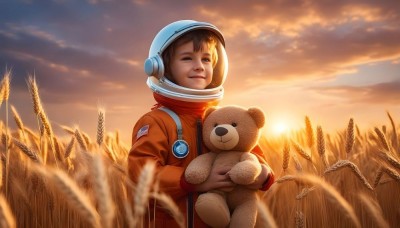
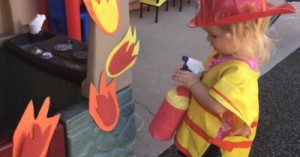
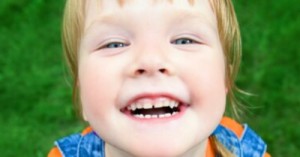
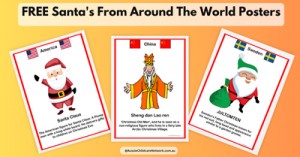

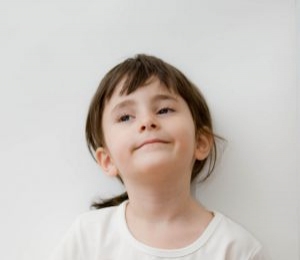 Open ended questions cannot be responded to with one word answers such as yes or no. These types of questions enables a child to provide
Open ended questions cannot be responded to with one word answers such as yes or no. These types of questions enables a child to provide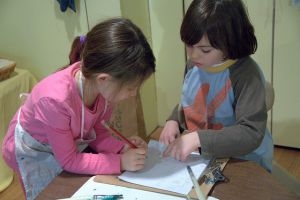 During your child’s preschool years, an important milestone begins to emerge. This is the development of pre-writing skills. Pre-writing skills are used to encourage, develop
During your child’s preschool years, an important milestone begins to emerge. This is the development of pre-writing skills. Pre-writing skills are used to encourage, develop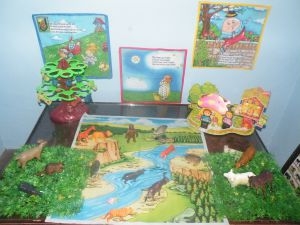 Open ended materials enables children to play freely. They are objects that have no rules to follow, use or function. Raw materials that can be
Open ended materials enables children to play freely. They are objects that have no rules to follow, use or function. Raw materials that can be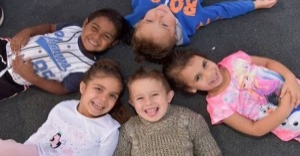 An Acknowledgment of the Country is a way of showing respect for the Traditional Owners and can be given by both non-Indigenous people and Aboriginal
An Acknowledgment of the Country is a way of showing respect for the Traditional Owners and can be given by both non-Indigenous people and Aboriginal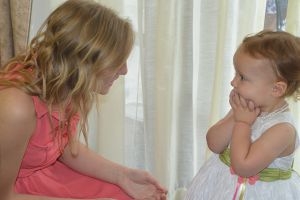 Language plays an important role in a child’s development. It enables a child to communicate effectively with their family, learn at school, socialize with friends,
Language plays an important role in a child’s development. It enables a child to communicate effectively with their family, learn at school, socialize with friends,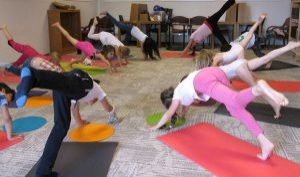 Like adults, children have to deal with their own stress in life. Moving house, starting a new school, preparing for a new sibling - these are
Like adults, children have to deal with their own stress in life. Moving house, starting a new school, preparing for a new sibling - these are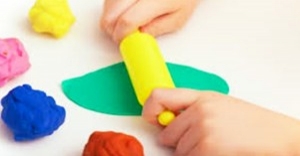 Playdough is such a versatile material. It provides numerous benefits to children as they manipulate it, it is safe and soothing and provides children with
Playdough is such a versatile material. It provides numerous benefits to children as they manipulate it, it is safe and soothing and provides children with Teaching children about sustainability enables them to appreciate and respect the natural environment. Early childhood services can provide meaningful hand on learning experiences in order
Teaching children about sustainability enables them to appreciate and respect the natural environment. Early childhood services can provide meaningful hand on learning experiences in order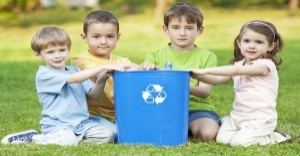 Recycling is an important concept that teaches children to care for the environment. It encourages children to be responsible and show a growing appreciating for
Recycling is an important concept that teaches children to care for the environment. It encourages children to be responsible and show a growing appreciating for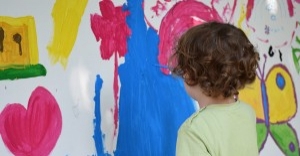 When children apply paint to paper, glue things together, or pound a lump of clay, they experiment with colour, shape design and texture.
When children apply paint to paper, glue things together, or pound a lump of clay, they experiment with colour, shape design and texture.
